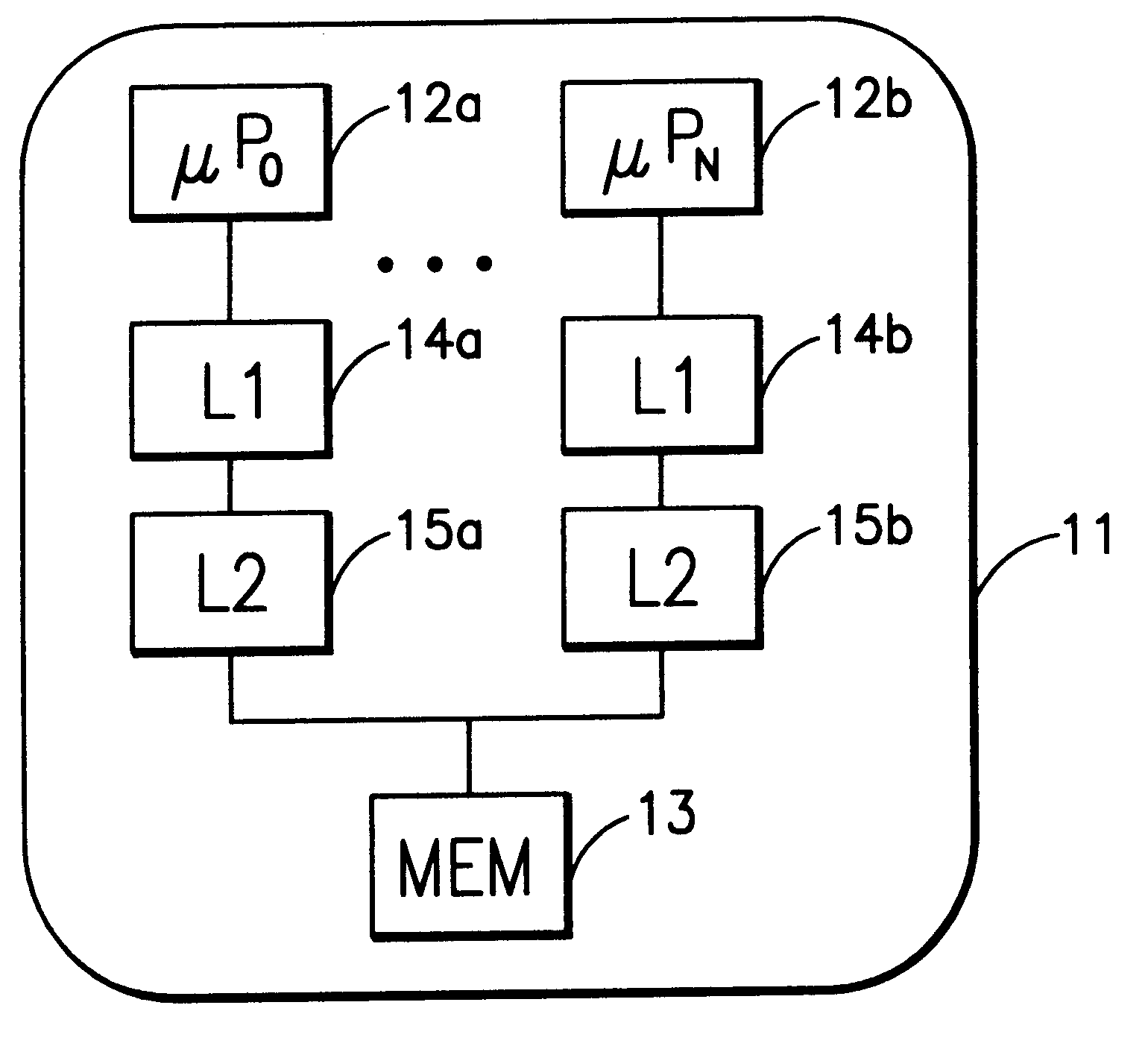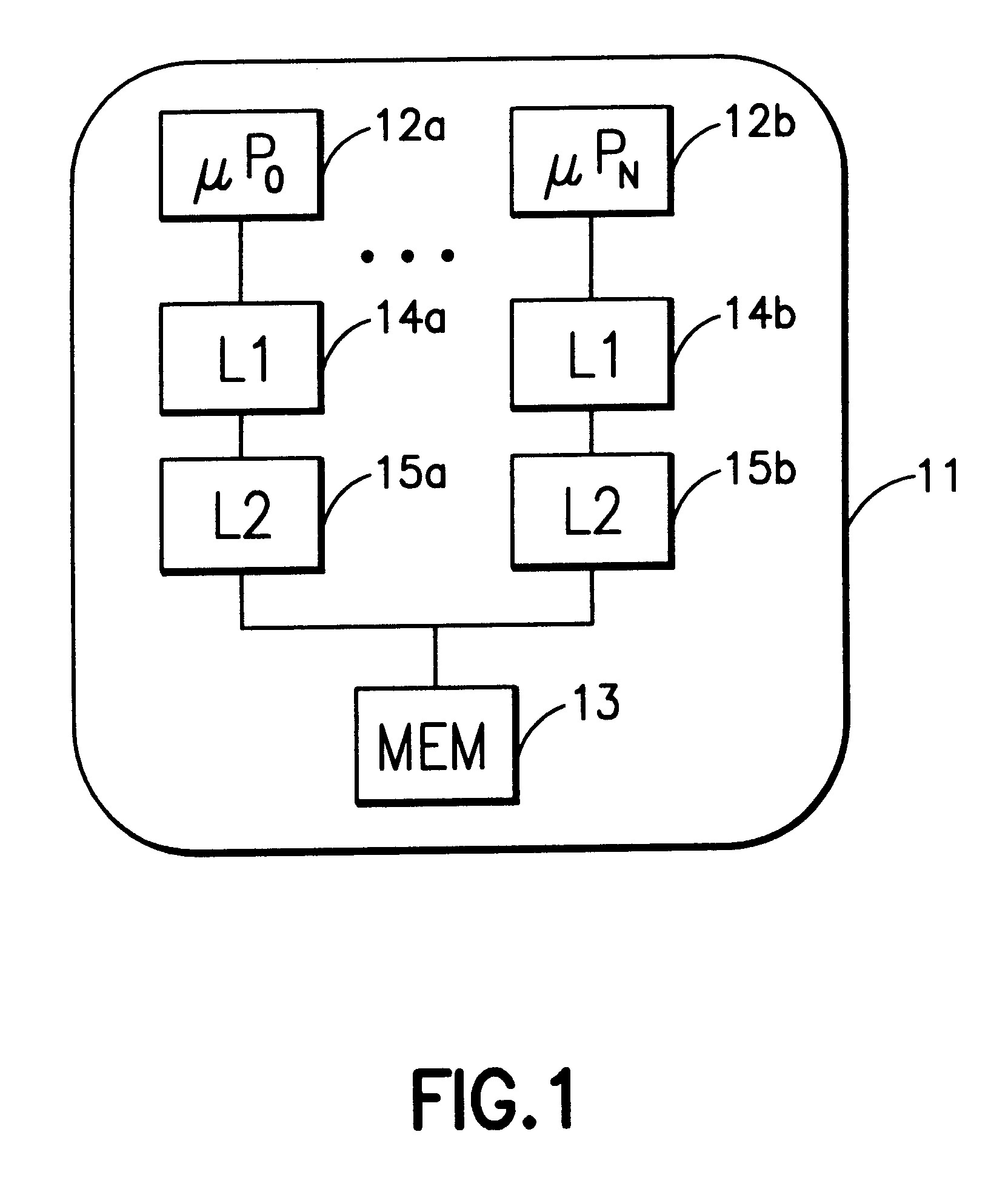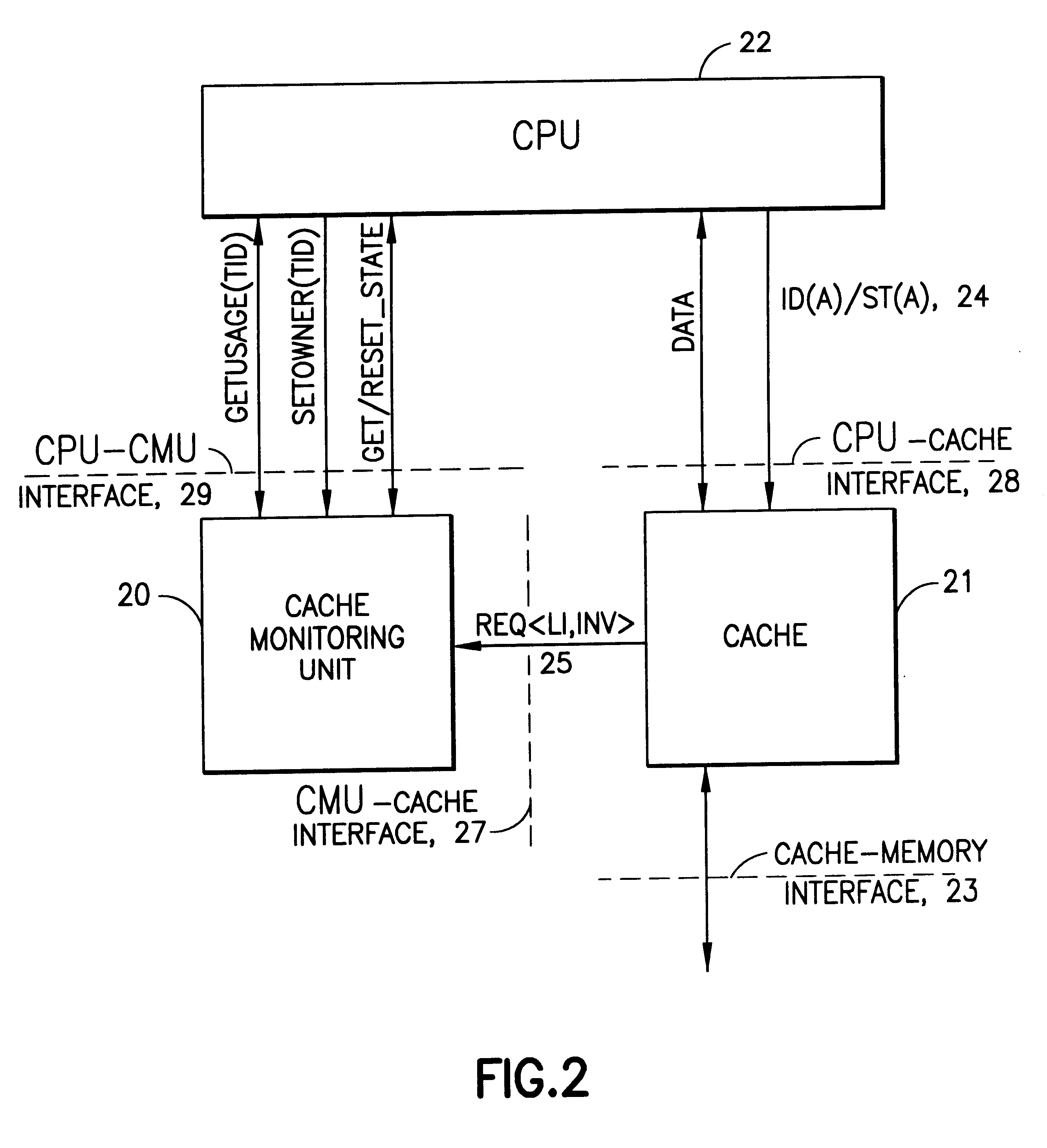Cache architecture to enable accurate cache sensitivity
a cache architecture and cache technology, applied in memory adressing/allocation/relocation, program control, multi-programming arrangements, etc., can solve the problem of increasing the difficulty of hiding cache misses using these techniques, causing cache misses to occur, and causing greater cache reload tim
- Summary
- Abstract
- Description
- Claims
- Application Information
AI Technical Summary
Problems solved by technology
Method used
Image
Examples
Embodiment Construction
As discussed above, FIG. 1 depicts an exemplary multiprocessor system (11) having a plurality of processors or CPUs (12a . . . 12b). Each processor is connected to a storage medium, short memory (13), that holds and / or supports application and operating system software. Interposed into the communication path of processor and its associated memory is at least one respective cache (14a,14b), though multiple levels of caches (14a, 14b, 15a, 15b) are possible. The purposes of said caches is to temporarily store frequently accessed content of said memory and provide a faster communication path to said cached memory content, in order to provide faster memory access.
In accordance with the present invention as illustrated in FIG. 2, the standard cache architecture is extended by a cache monitoring unit (20) (CMU). As the name indicates, the purpose of this extension is to monitor and attribute ownership and usage of the cache for the purpose of measuring the cache footprint of a computation...
PUM
 Login to View More
Login to View More Abstract
Description
Claims
Application Information
 Login to View More
Login to View More - R&D
- Intellectual Property
- Life Sciences
- Materials
- Tech Scout
- Unparalleled Data Quality
- Higher Quality Content
- 60% Fewer Hallucinations
Browse by: Latest US Patents, China's latest patents, Technical Efficacy Thesaurus, Application Domain, Technology Topic, Popular Technical Reports.
© 2025 PatSnap. All rights reserved.Legal|Privacy policy|Modern Slavery Act Transparency Statement|Sitemap|About US| Contact US: help@patsnap.com



